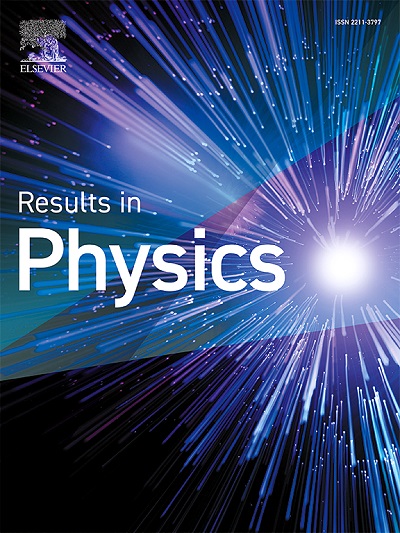A numerical approach for multi-dimensional ψ-Hilfer fractional nonlinear Galilei invariant advection–diffusion equations
IF 4.4
2区 物理与天体物理
Q2 MATERIALS SCIENCE, MULTIDISCIPLINARY
引用次数: 0
Abstract
In this paper, we introduce the -Hilfer fractional version of nonlinear Galilei-invariant advection–diffusion equations in one and two dimensions. A new type of basic functions, namely the -Chebyshev cardinal functions (CFs), is introduced to establish a hybrid numerical strategy to solve these equations. The key advantageous property of these functions is the simplicity of computing their -Hilfer fractional derivative. Utilizing this property, a new operational matrix for the -Hilfer fractional derivative of these functions is derived. Consequently, a hybrid numerical strategy based on the shifted Chebyshev polynomials (CPs) and -Chebyshev CFs is proposed to solve these equations. More precisely, in the proposed strategy, a finite expansion for the solution of the equation under investigation is considered. The shifted CPs are used to approximate the solution in the spatial domain, while the -Chebyshev CFs are utilized to approximate the solution in the temporal domain. By applying the -Hilfer fractional derivative operational matrix of the -Chebyshev CFs, the classical derivatives operational matrices of the shifted CPs, and employing the collocation method, the solution of the equation under consideration is obtained by solving a system whose elements are algebraic equations. The accuracy of the presented strategy is examined by numerous examples.
求助全文
约1分钟内获得全文
求助全文
来源期刊

Results in Physics
MATERIALS SCIENCE, MULTIDISCIPLINARYPHYSIC-PHYSICS, MULTIDISCIPLINARY
CiteScore
8.70
自引率
9.40%
发文量
754
审稿时长
50 days
期刊介绍:
Results in Physics is an open access journal offering authors the opportunity to publish in all fundamental and interdisciplinary areas of physics, materials science, and applied physics. Papers of a theoretical, computational, and experimental nature are all welcome. Results in Physics accepts papers that are scientifically sound, technically correct and provide valuable new knowledge to the physics community. Topics such as three-dimensional flow and magnetohydrodynamics are not within the scope of Results in Physics.
Results in Physics welcomes three types of papers:
1. Full research papers
2. Microarticles: very short papers, no longer than two pages. They may consist of a single, but well-described piece of information, such as:
- Data and/or a plot plus a description
- Description of a new method or instrumentation
- Negative results
- Concept or design study
3. Letters to the Editor: Letters discussing a recent article published in Results in Physics are welcome. These are objective, constructive, or educational critiques of papers published in Results in Physics. Accepted letters will be sent to the author of the original paper for a response. Each letter and response is published together. Letters should be received within 8 weeks of the article''s publication. They should not exceed 750 words of text and 10 references.
 求助内容:
求助内容: 应助结果提醒方式:
应助结果提醒方式:


